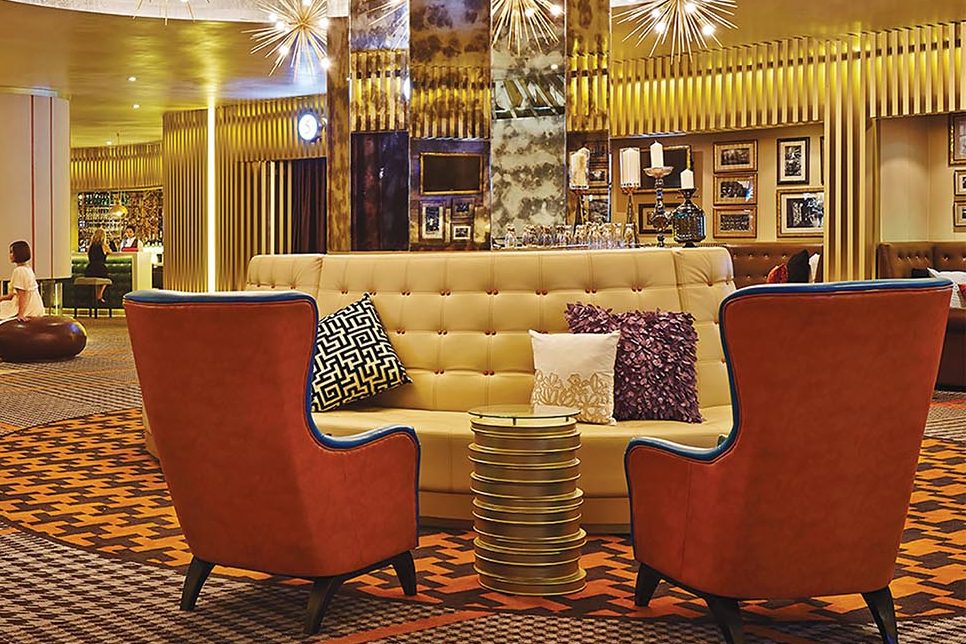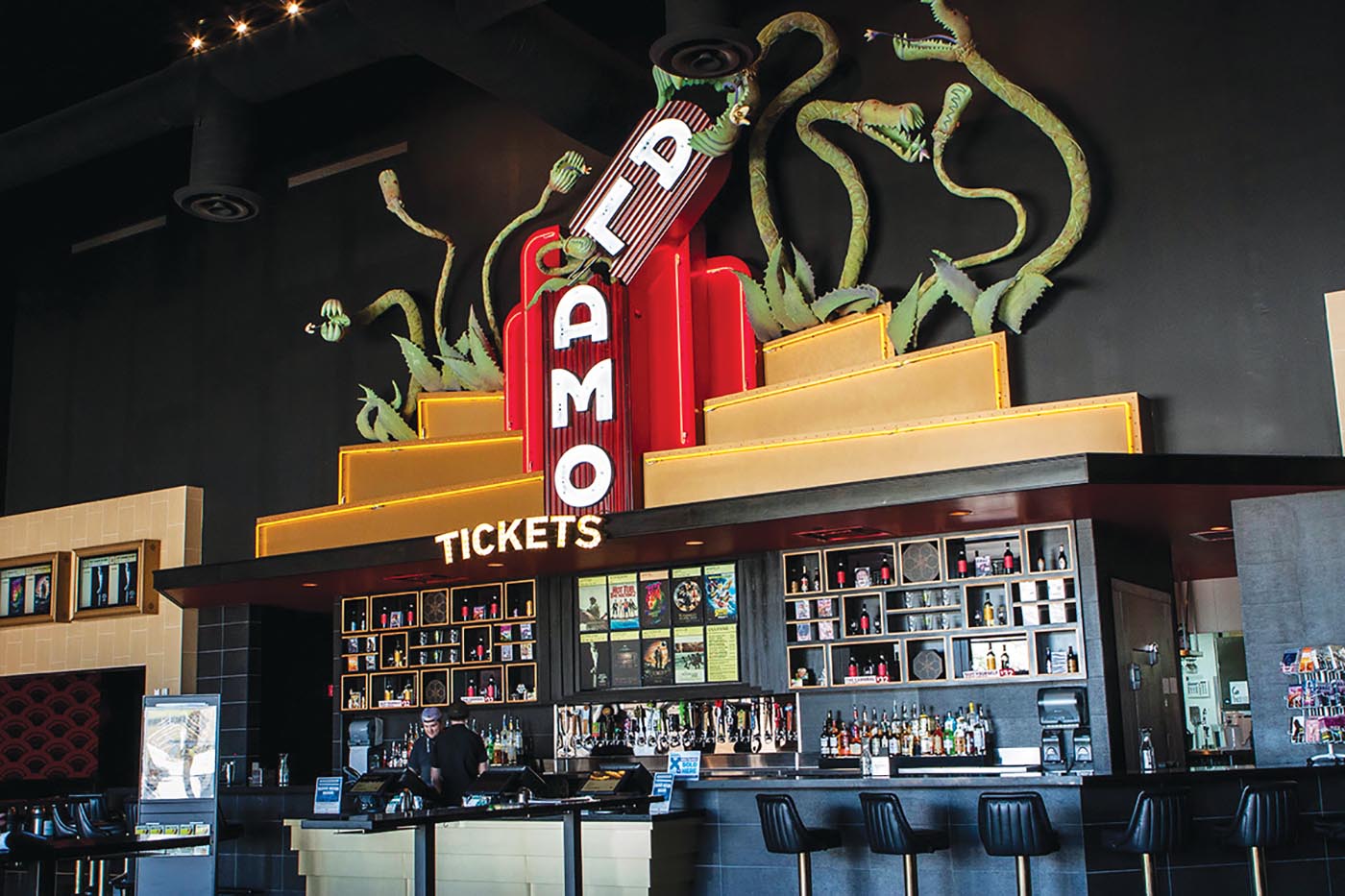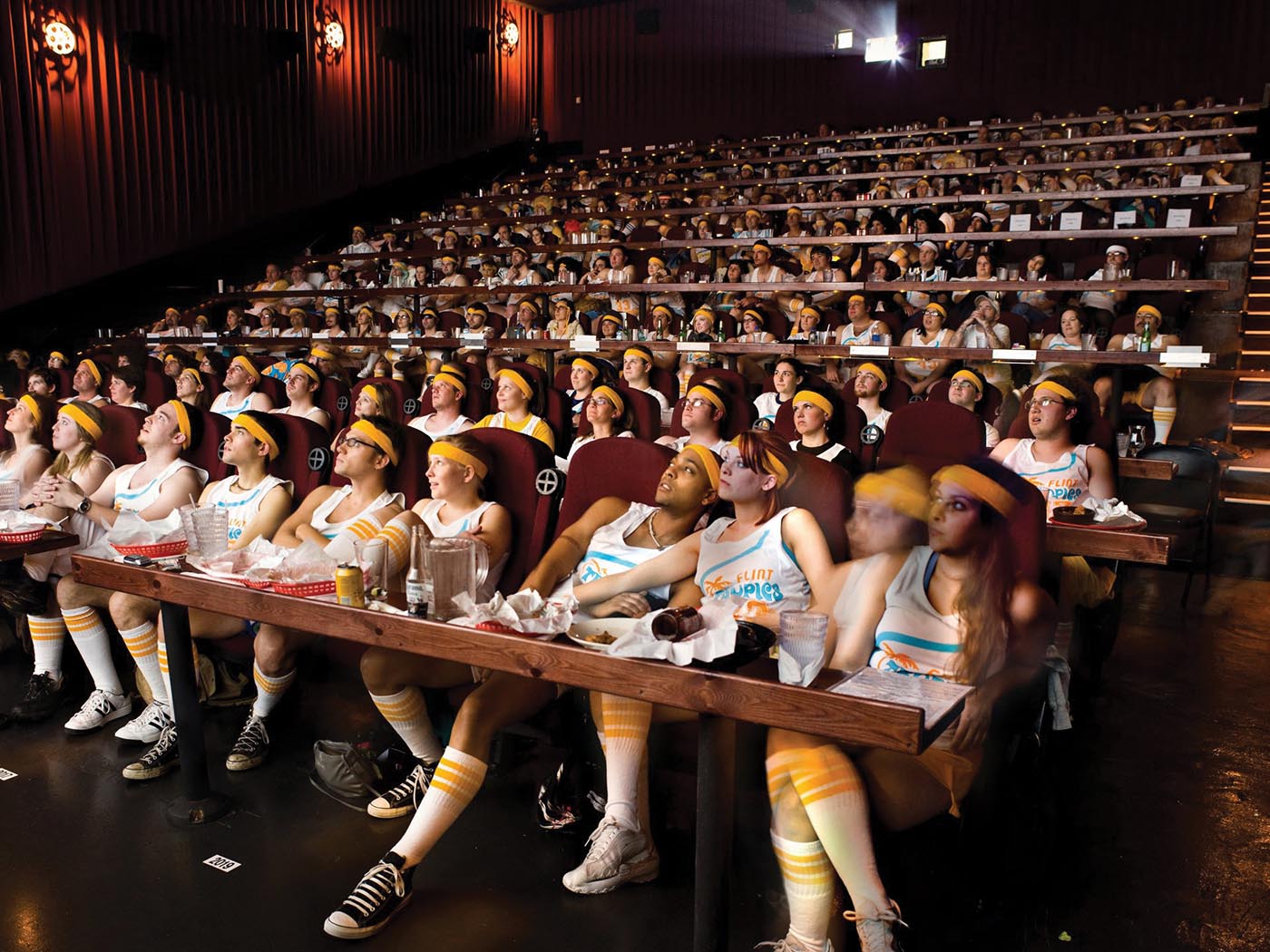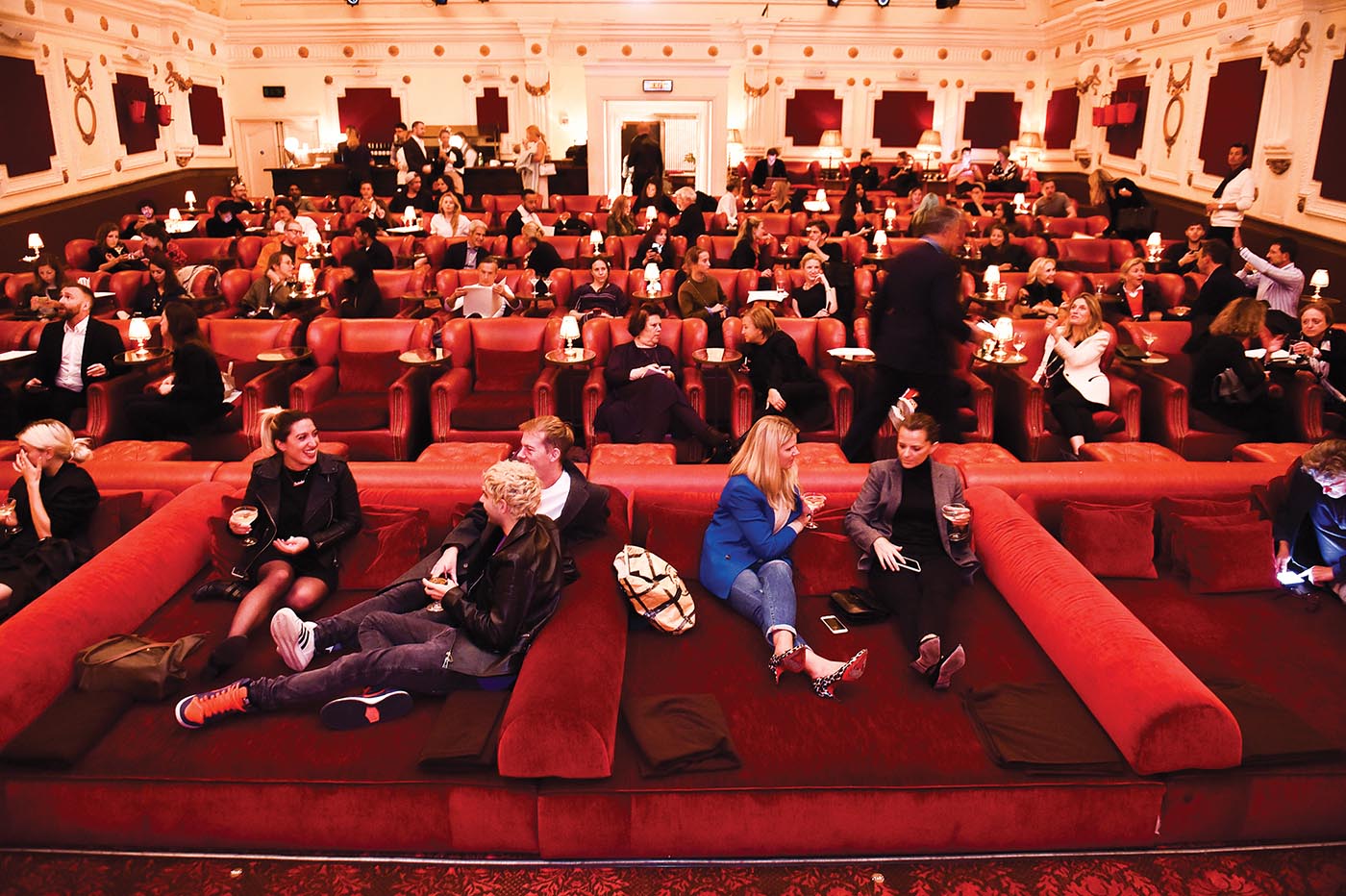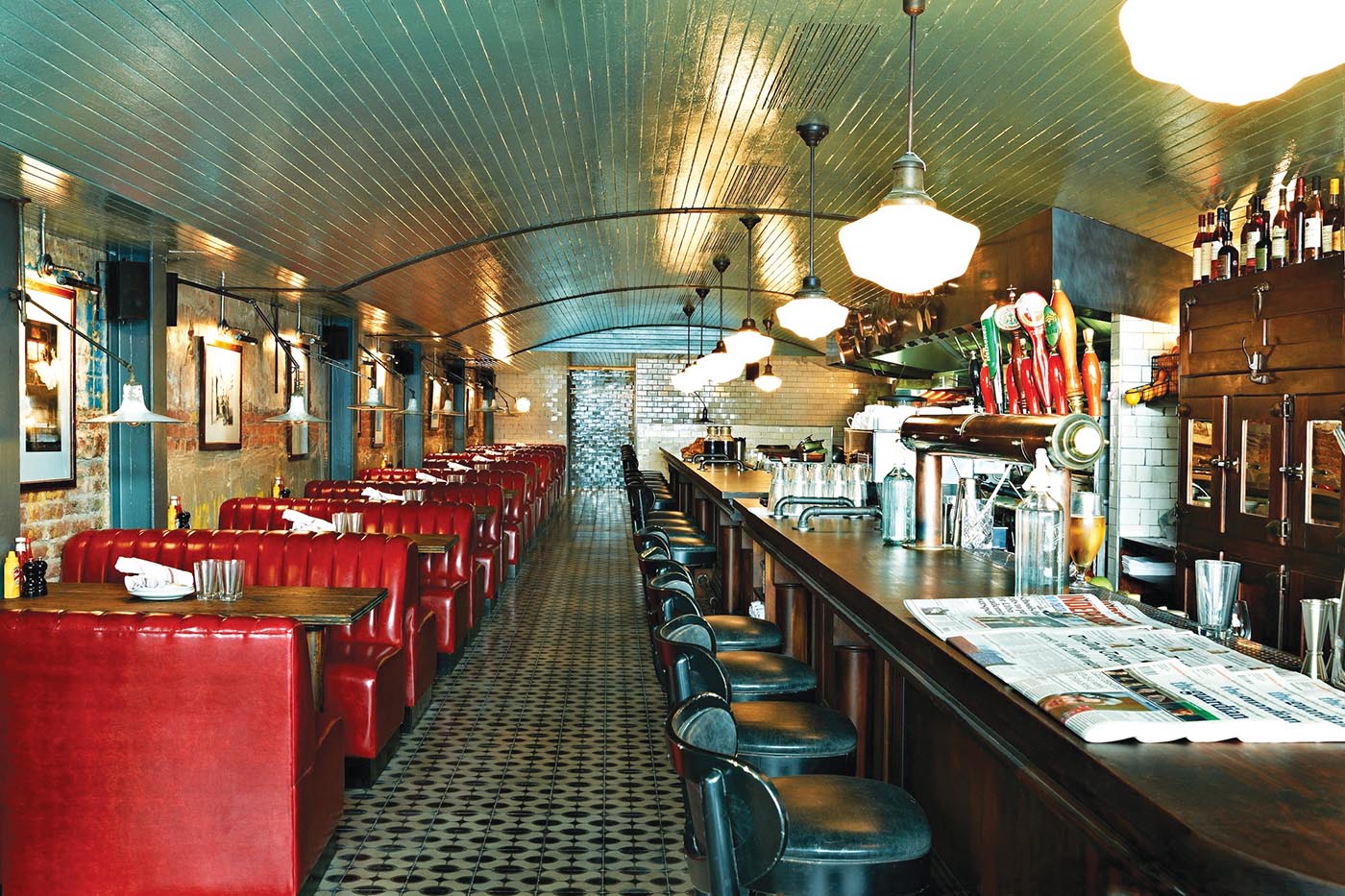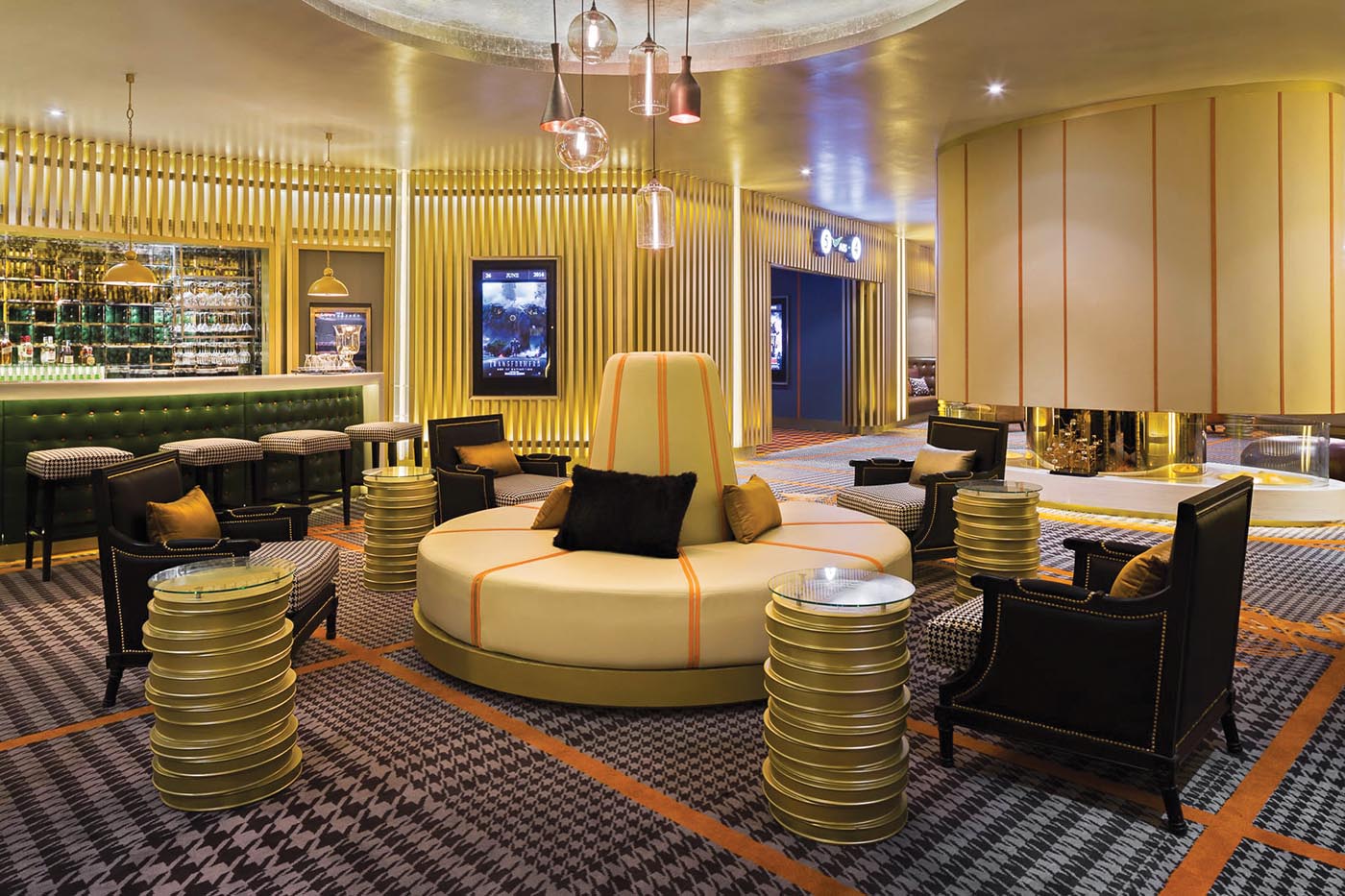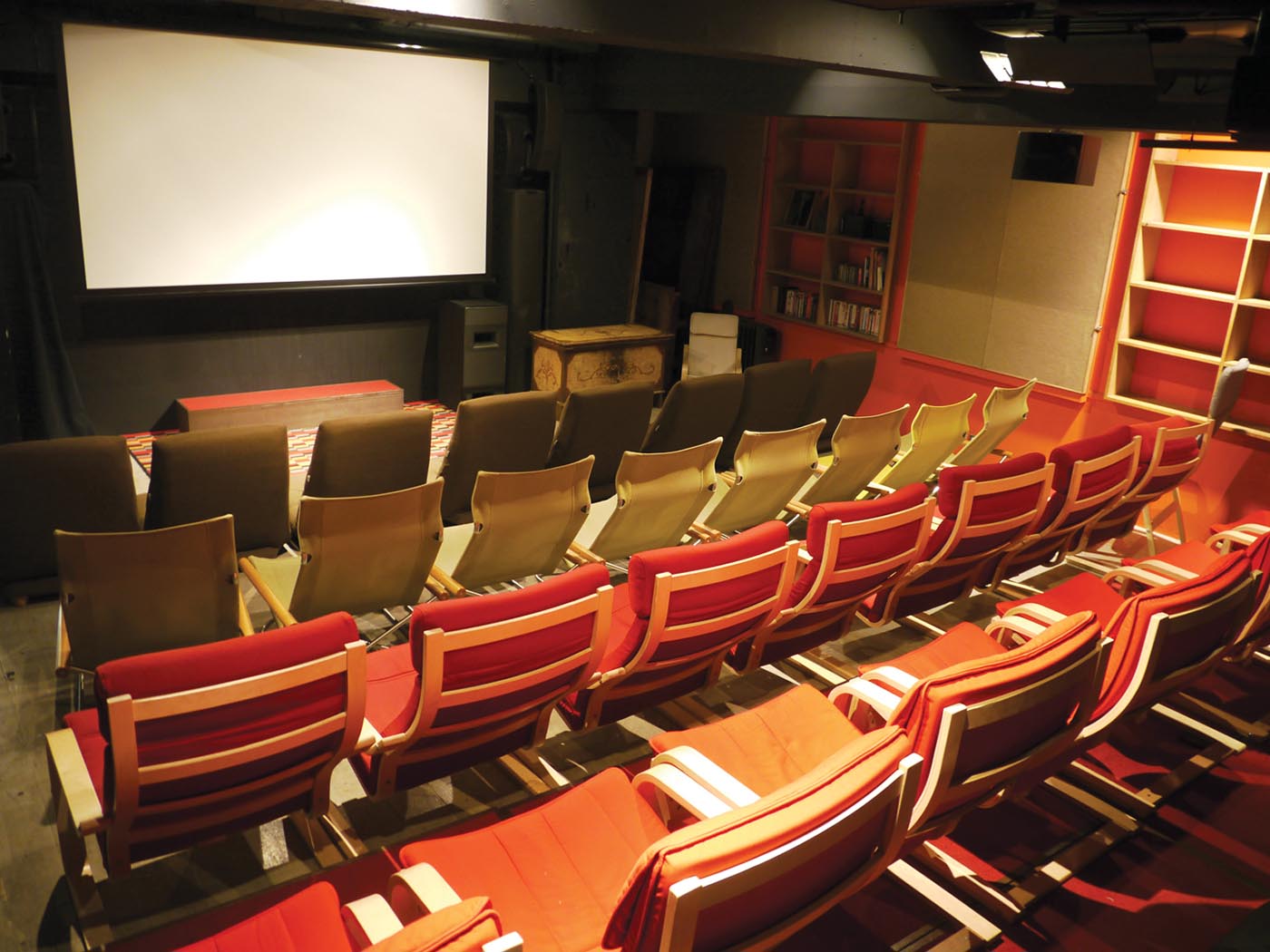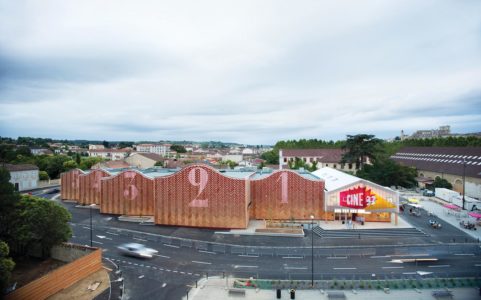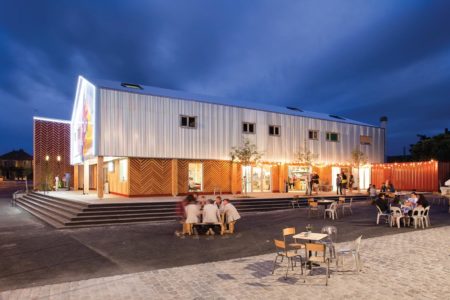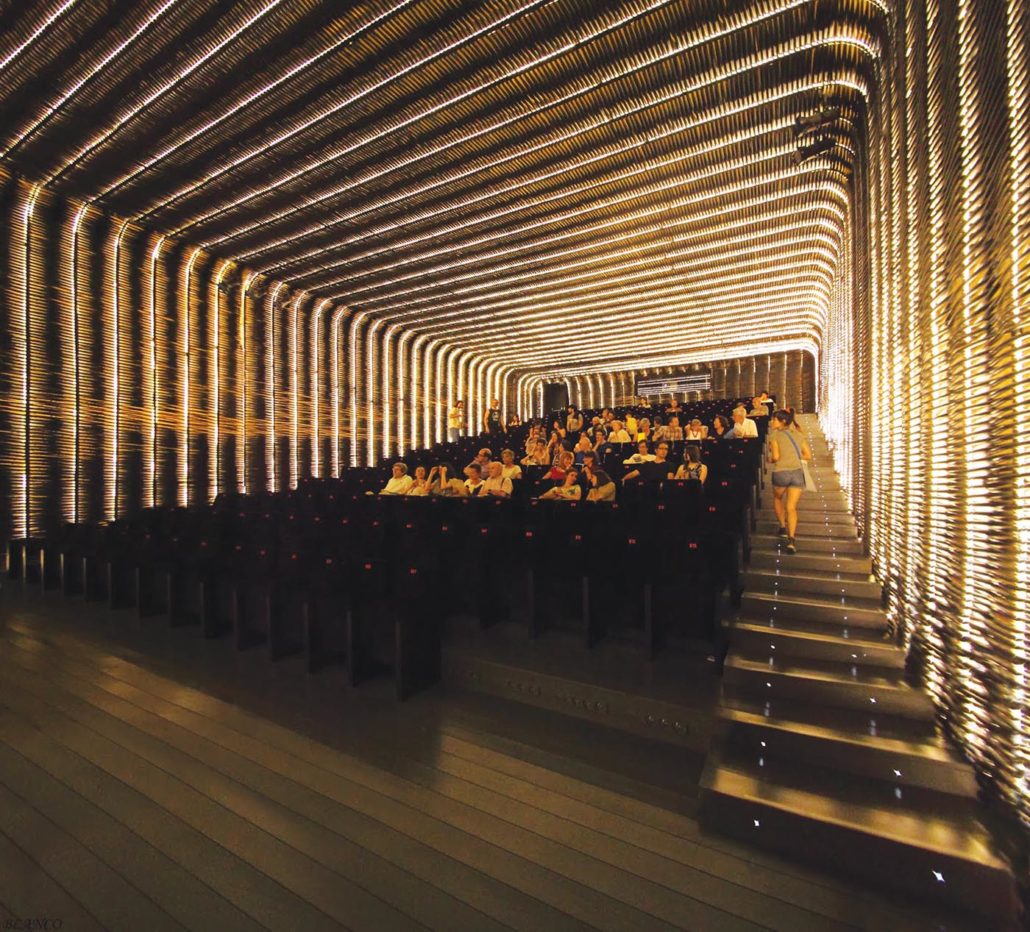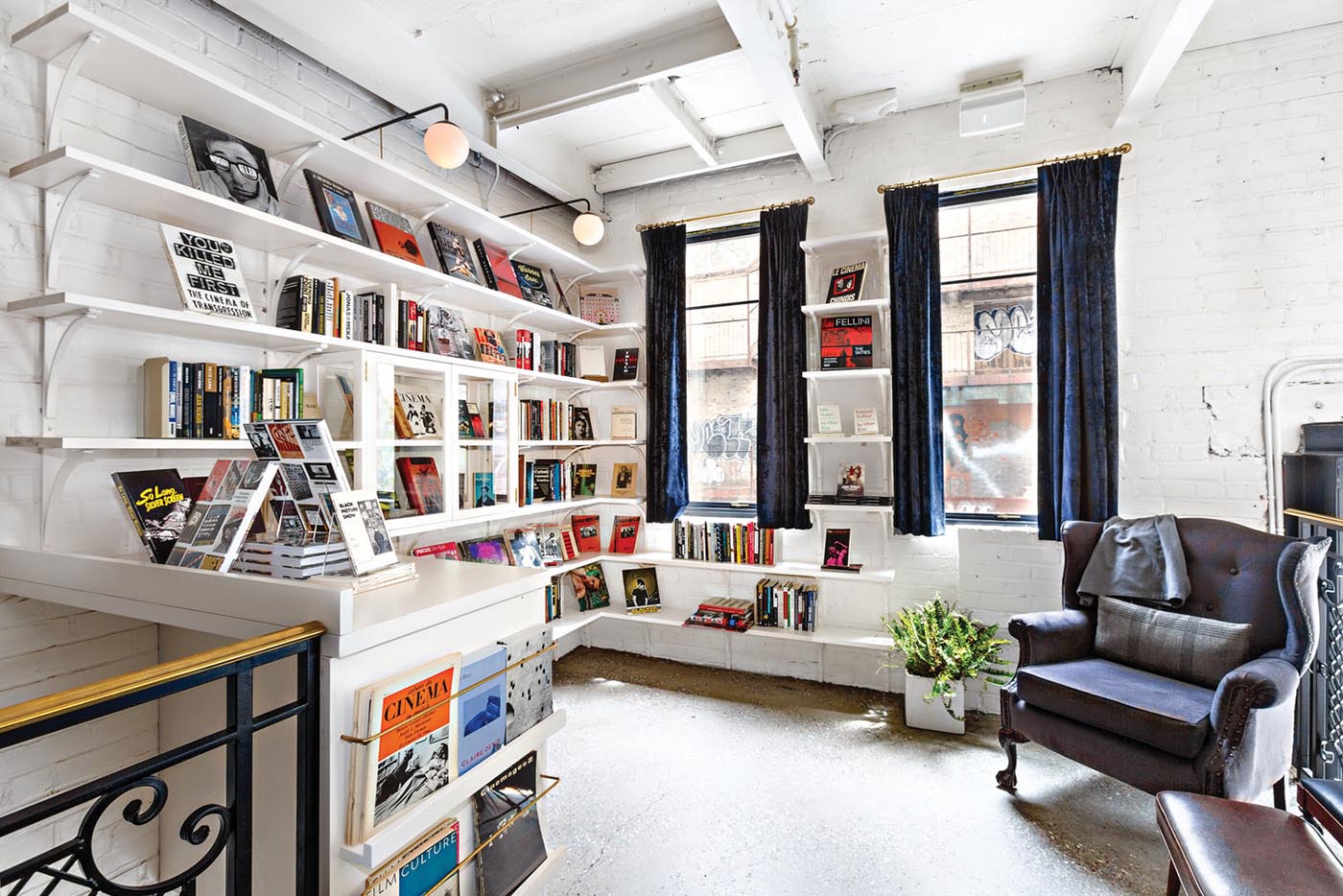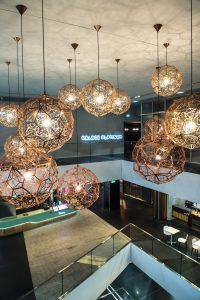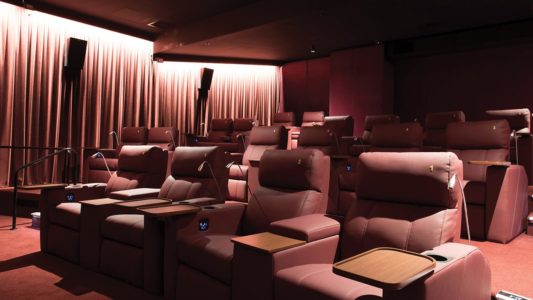We face constant challenges to remix, re-define, refurbish and reposition our centres. We’re not alone and if we view ourselves as the macro, think about what’s happening inside our centres in the micro. Cinemas have to change constantly. In this article, Susanne Pini looks at the changing cinema with examples from the USA, South Korea, France, Spain, Japan and finally, Sydney.
With the rise of home-viewing opportunities and the entertainment content available anywhere, anytime, the bricks-and-mortar cinemas are working harder than ever to reinvent themselves and to validate their existence.
Once, large-format screens and the latest sound systems were enough, but these days using technology only to attract audience is like putting a Band-Aid on a bullet wound, warn the researchers from Continuum, a global innovation design firm. While it might work with Star Wars or Blade Runner blockbusters, for anything else there is Netflix; it’s cheaper, easier, and more convenient. Thus, needless to say, cinemas today need to offer more than just a film – they need to stop competing on ‘convenience’ and start focusing on ‘experience’. According to various audience surveys, the majority of people are not going to the cinema primarily to watch the film – they go for a shared social experience with family or friends. Yet, social interactions actually centre around conversation, the mixing of people and shared food and drink, rather than sitting in front of the screen. In a way, cinemas are competing for a weekend night out with other social places, like bars and restaurants even more than with Netflix.
To stay afloat, cinemas are trying to transform an overall cinema-going experience, focusing on comfort, interactivity, individuality or luxury.
We are seeing more architecturally designed multipurpose spaces with gourmet dining options and trendy bars to provide people with a place to hang out and socialise long after the credits roll. The concept is proving popular with the cinema industry too since “fundamentally the exhibition business is not about selling a ticket to a movie, it’s about selling the popcorn,” as Deakin University researcher Deb Verhoeven puts it. Everything else about cinema design is changing: standard chairs are being replaced with plush beds and reclining leather armchairs, together with pillows, blankets and side tables. Basically you get all the comforts of home and more, plus a gigantic movie screen!
- Alamo Drafthouse, Texas USA
- Alamo Drafthouse, Texas USA
Alamo Drafthouse, USA
Alamo Drafthouse began as a second-run movie theatre in the late 1990s in Austin, Texas, and quickly distinguished itself by the food and drink service offered inside the theatre while watching cult classics. They also stood out by offering unique programming and audience-participation events, including everything from screening silent movies scored by local bands playing live accompaniment, food-themed films with matching dinners to quote-along events and mandatory themed costume for audience.
As the chain evolved, 28 locations across the US and growing, so did the food and drinks offerings. The seating is arranged with rows of cabaret-style tables and customers write their orders on slips of paper, which are picked up by black-clad waiters. The lobbies are essentially bars. All of this has made the feeling of going to an Alamo Drafthouse more than just seeing a movie. It’s an event, an all-night experience or, as Wired.com sums it up, “come for the Gremlins, stay for a local microbrew!”
The cinema is also famous for requiring its audience to maintain proper cinema-going etiquette, such as vigilantly policing mobile phone usage. Because of its unique approach to movie-going, Alamo Drafthouse was titled the The #1 movie theater in the country doing it right by the Entertainment Weekly. However, as CEO Tim League said, all that they are doing is going back to the model of the 1940s and 1950s, before the multiplex was created, and individual theatres had to focus on establishing that bond with your core audience. This is a movie theatre experience as it should be, agrees the recent CNN article: the movie you pay for, zero annoyances and great food and drinks being served to your seat.
- Electric Cinema, London
- Electric Cinema Diner, London
Electric Cinema, London
Electric Cinema in Notting Hill, one of London’s oldest cinemas built in 1910, has survived two world wars and a narrow escape from being turned into a bingo hall, until finally being beautifully refurbished to its former glory. Reflecting the cinema’s history, the interior features plush standalone leather armchairs, footstools, side tables and waiter service delivering cocktails to your chair. There are also six upholstered double beds in its first row complete with cashmere blankets taking cinema comfort to the next level. Adjacent to the cinema is The Electric Diner, with a funky bar serving everything from craft beers to champagne. There’s booth and bar seating, and a specially chosen soundtrack played from the Diner’s reel-to-reel machine.
Sister cinema, Electric Cinema in Shoreditch is a luxury, single-screen cinema, located in the basement of an old Shoreditch warehouse building. It’s a part of the quirky three-floor complex called Barber & Parlour, featuring a chic beauty parlour, hair salon, grooming store with a curated products selection and an artisanal barbershop!
Finally, there is the Barber & Parlour Kitchen, a fully licensed deli-bar on the ground floor serving a range of premium drinks and gourmet snacks to enjoy before, during or after the film.
4DX, South Korea
 South Korea’s 4DX chain promotes itself as the first 4D movie theatre in the world that takes 3D movies to the next level by introducing movement and scent, as well as amusement park-type effects. The format is effectively turning traditional, passive film watching into something more experiential: kinetic seats shake, tilt, and vibrate, while you feel air blasts, scents, sprays of water, even fog release and strobe lighting, to echo what’s happening on the screen.
South Korea’s 4DX chain promotes itself as the first 4D movie theatre in the world that takes 3D movies to the next level by introducing movement and scent, as well as amusement park-type effects. The format is effectively turning traditional, passive film watching into something more experiential: kinetic seats shake, tilt, and vibrate, while you feel air blasts, scents, sprays of water, even fog release and strobe lighting, to echo what’s happening on the screen.
4DX aims to create a full ‘4D’ experience by connecting with the characters on screen, placing them into the shoes of the protagonist by feeling what they feel, hence making film going ‘immersive’. The concept is really more theme park than cinema as we know it, offering something viewers simply can’t get at home. 4DX currently has 380 screens in 48 different countries.
- Embassy Diplomat Screens, Bangkok
- Embassy Diplomat Screens, Bangkok
Embassy Diplomat Screens, Bangkok
Located at the top of Bangkok’s luxury shopping mall, Embassy Diplomat Screens is an exclusive entertainment venue that combines elements of a VIP club and state-of-the-art cinema, according to Studio Gorda architects, who applied various concepts from high-end hospitality and residential design.
Inspired by the venue’s location on the site of the former British Embassy, the interior design is a modern interpretation of a prestigious British gentlemen’s club. The main cinema lounge features a large fireplace, tufted leather furniture and custom designed carpeting, referencing classic men’s suit patterns like the Prince of Wales check and houndstooth. Each of the five screening rooms also has a residential look and feel, from the scale all the way down to the styling and objects on display, including picture frames, books, and lampshades. There are multiple seat styles to choose from, including reclining daybeds and cocoon-like seats, all equipped with blankets and pillows, an adjustable light, a phone-charging station, headphones with different language options and even a button to call for butler service, just in case you need to restock your private minibar!
- Uplink X, Tokyo
Uplink X, Tokyo
Tucked away in one of Shibuya’s side streets, Uplink X calls itself the smallest movie theatre in Japan, with just 40 seats. The space started as a distribution and production company, but nowadays it serves as a cultural ‘hot spot’ with a multipurpose cinema space, a gallery, a popular restaurant and an unconventional shop selling anything from books and faux fur hats to teas and cutlery. Its standout feature however is its ‘social seating’ plan, with 10 various types of seats that are not screwed into the ground, but can be moved around within the space, making the movie-watching experience more interactive and social. There are armchairs, wooden stools, even deckchairs, so it bears more similarities to an IKEA showroom than your average multiplex. This impressive little cinema specialises in screening arthouse films and documentaries, but it often stages dance performances as well.
- CINE 32, Auch, France
- CINE 32, Auch, France
CINE 32, Auch, France
A five-screen cinema in Auch, a small city in southwestern France, challenges the idea of the suburban shoebox-type multiplex. Instead, the architects Encore Hereux have created the image of a collection of small neighbourhood cinemas stuck together in a staggered row of numbered wooden sheds. One screen is contained inside each of the sheds, each furnished with different coloured seating with hand-painted numbers on pediments revealing the diversity of both spaces and styles in cinema.
Architects were inspired by the old images of the arched facades of Art Deco picture houses and the chevron-patterned walls of local tobacco-drying sheds, with their openwork natural wood façade and the versatile space. Their research determined that projection rooms would embrace different atmospheres – from a starry night to a sunrise.
As the architects explain, “cinema has this unique opportunity to gather different people for a common but yet unusual journey” and they wanted to offer meaningful conditions for such a trip.
The timber-clad mixed-use complex also features activity workshops, a cafe with a terrace, a gallery and a number of offices spaces.
- Cineteca Matadero, Madrid
Cineteca Matadero, Madrid
The stunning Cineteca Matadero, housed in the former slaughterhouse, is not your typical conversion. The dramatic design features huge glowing baskets that dominate the dimly lit staircases, woven walls surrounding the two auditoriums, painted black so as not to detract from the screens and the exposed bricks of the old slaughterhouse’s walls on which lighting and materials are added, merging the original function with a new and innovative look. Apparently, Matadero actually used to inspire cineastes long before it became a Cineteca and they used to shoot war films here, when it was an abandoned lot. Dedicated to non-fiction and experimental films, the Cineteca includes two cinemas, a film studio, an archive and a terrace for outdoor screenings.
- Metrograph, New York
Metrograph, New York
In March 2016, cineastes from Dustin Hoffman to Sofia Coppola and Jim Jarmusch came to experience the glamour and grit of Metrograph, the first arthouse cinema to open in New York City in decades and the “coolest new theatre in the world,” according to GQ magazine. Brainchild of Alexandar Olch, fashion designer and independent filmmaker, the two-screen cinema has won the hearts and minds of film enthusiasts for specialising in state-of-the-art digital videos and 35mm prints. Everything else at Metrograph, from the location in the old food storage warehouse in the Manhattan side blocks, to their website and the ticket design, also has a nostalgic feel to it.
The idea was to bring romance and low-key glamour of the silver screen’s past into a new, hip era, to create a place where you sense you entered somewhere special, even before the film starts. Walking inside the Metrograph itself feels a little bit like stepping onto a film set. The marquee has a custom-designed typeface, bespoke theatre seats upholstered with brushed cotton are made out of locally reclaimed wood, and floors are terrazzo stone that “broadcast into a very basic New York structural concrete,” states Alexander Olch. The building features two stylish bars, film-focused bookshop and a candy store that sells exclusive confectionery from around the world, laid out in a style similar to Olch’s tie samples at his boutique around the corner. Upstairs, there is The Commissary, an elegant full-service restaurant with a balcony, inspired by the backlot cafeterias of 1920s Hollywood studios. The lounge behind the balcony even has a window where you can see the projectionists at work, adding to the Wonka’s factory for movie wonks vibe, describes The Guardian.
For Olch, the key thing is that going to the movies needs to be an entire experience that’s special. He wants this to be a place where you have a meal, read a book, catch a film, have a drink, browse internet, stay for another meal, meet friends and then maybe even one of the next great screenplays gets written here, in the afternoons. As expectations go, Metrograph have indeed raised the roof.
- Palace Central, Sydney
Palace Central, Sydney
Finally, Sydney has just got a brand new arthouse cinema! Opened only a few weeks ago, Palace Central, located in the multi-award winning development Central Park Mall in Chippendale, “represents a transformation of the cinematic experience in Sydney,” according to their website.
The luxury complex has 13 boutique cinemas, including three Platinum, all fitted out with ergonomic leather seats, handbuilt in Spain. There are multiple lounge and bar areas, such as a craft beer hall and a champagne bar, as well as an in-cinema dining menu of share plates and charcuterie boards and options from surrounding restaurants. Sweeping views from the third-floor cinema simply complete an upmarket night’s entertainment!


